本教程已加入 Istio 系列:
https://istio.whuanle.cn
7. Authentication
本章的内容主要是讲解服务间通讯的安全和集群外部访问内部服务的 jwt token 验证。
Istio 提供两种类型的认证,一种是服务间认证 Peer Authentication,一种是客户端请求认证 Request Authentication。
Peer Authentication
Peer authentication 用于服务到服务的认证,在零信任网络中,Envoy 给服务之间的通讯加密,只有服务双方才能看到请求内容和响应结果。
在 Istio 中,默认情况下,服务之间的通信不会被加密或进行身份验证。比如说, A 服务通过 http 请求 B 服务,流量经过 Envoy A 时,Envoy A 直接将流量发送到 Envoy B 中,流量不会进行加密处理,也就是明文请求。
Istio 的 Peer Authentication 主要解决以下问题:
- 保护服务到服务的通信。
- 提供密钥管理系统,通讯加密需要使用证书,而证书会过期,所以需要一个管理系统自动颁发证书、替换证书等。
- 为每个服务提供强大的身份标识,以实现跨群集和云的互操作性。
Request Authentication
Request authentication 用于外部请求的用户认证, Istio 使用 JWT(JSON Web Token) 来验证客户端的请求,并使用自定义认证实现或任何 OpenID Connect 的Request authentication 认证实现来简化的开发人员体验。
支持以下认证类型:
- ORY Hydra
- Keycloak
- Auth0
- Firebase Auth
- Google Auth
Peer Authentication
Istio 的 PeerAuthentication 是一种安全策略,用于对服务网格内的工作负载之间的通信进行双向 TLS(mTLS)验证。
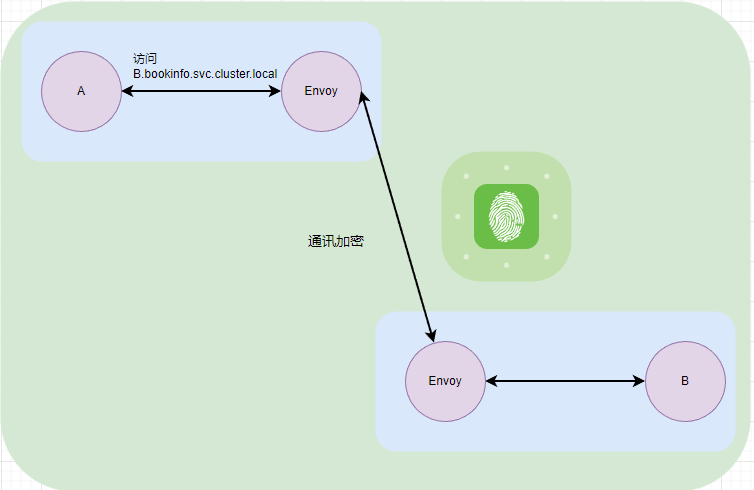
通过 PeerAuthentication 在 Envoy 间启用 mTLS,以确保工作负载之间的通信在传输过程中是加密和安全的。
PeerAuthentication 可以配置为整个集群或只在命名空间中起作用,但是只能有一个网格范围的 Peer 认证策略,每个命名空间也只能有一个命名空间范围的 Peer 认证策略。
PeerAuthentication 的定义
下面是一个简单的 PeerAuthentication 示例:
apiVersion: security.istio.io/v1beta1
kind: PeerAuthentication
metadata:
name: my-peer-authentication
namespace: my-namespace
spec:
selector:
matchLabels:
app: my-app
mtls:
mode: STRICT
selector: 标签选择器,用于选择应用 PeerAuthentication 策略的工作负载。例如:
selector:
matchLabels:
app: my-app
如果省略选择器,PeerAuthentication 策略将应用于命名空间中的所有工作负载。
-
mtls: 定义双向 TLS 的模式,有三种模式。
-
STRICT: 强制执行 mTLS,要求客户端和服务器使用 TLS 进行通信。这需要客户端和服务器具有有效的证书。 -
PERMISSIVE: 允许客户端使用TLS或纯文本进行通信。这对于逐步迁移到 mTLS 的场景非常有用。 -
DISABLE: 禁用 mTLS,不要求客户端和服务器使用 TLS 进行通信。
-
只能有一个网格范围的 Peer 认证策略,每个命名空间也只能有一个命名空间范围的 Peer 认证策略。当同一网格或命名空间配置多个网格范围或命名空间范围的 Peer 认证策略时,Istio 会忽略较新的策略。当多个特定于工作负载的 Peer 认证策略匹配时,Istio 将选择最旧的策略。
实验
我们继续服用前面使用的 bookinfo 微服务,给 bookinfo 命名空间启用 mTLS。
kubectl apply -f - <<EOF
apiVersion: "security.istio.io/v1beta1"
kind: "PeerAuthentication"
metadata:
name: "bookinfo-policy"
namespace: "bookinfo"
spec:
mtls:
mode: STRICT
EOF

然后再次请求 productpage 服务,可以使用以下命令制作大量的模拟请求。
for i in `seq 1 1000`; do curl -s -o /dev/null http://192.168.3.150:30666/productpage; done
然后在 kiali 面板中的 Display 选项中下拉选择 Security。
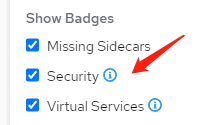
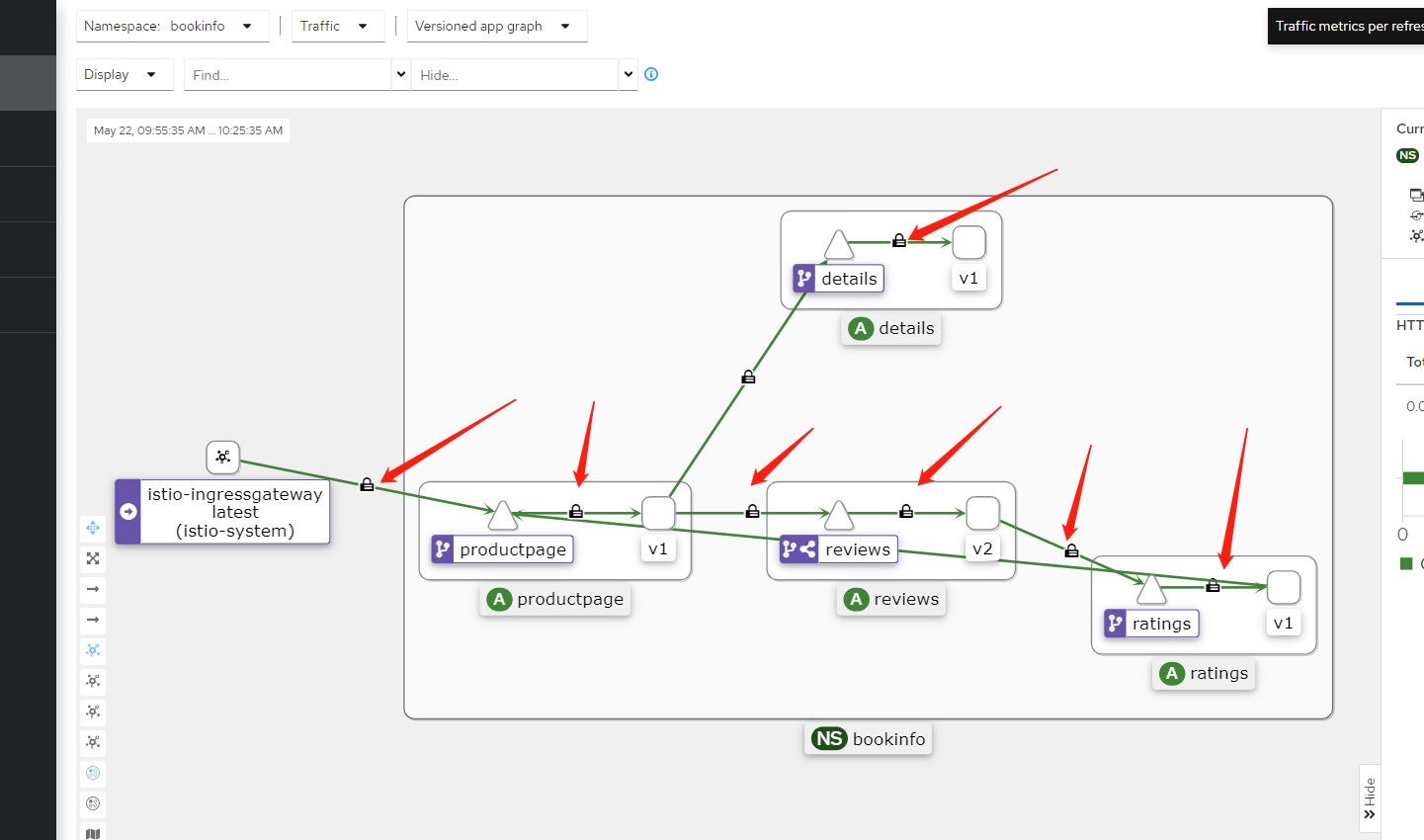
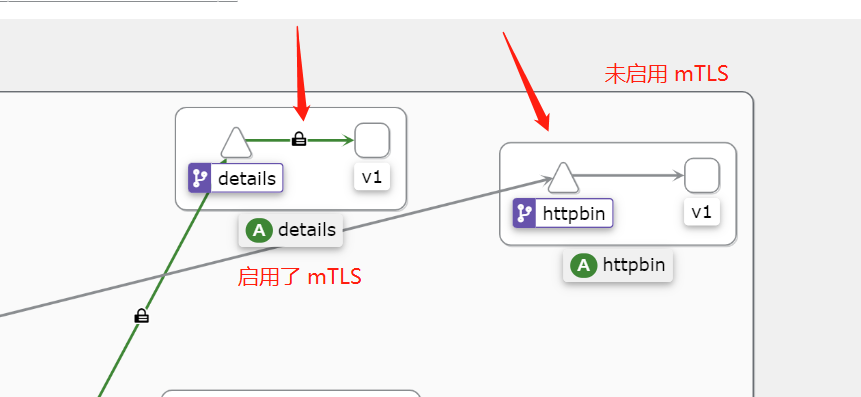
RequestAuthentication
Istio 的 RequestAuthentication 是一种安全策略,用于验证和授权客户端访问Istio服务网格中的服务。
RequestAuthentication 需要搭配一个 AuthorizationPolicy来使用。RequestAuthentication 和 AuthorizationPolicy 这两个策略用于验证和授权客户端访问服务网格中的服务。
RequestAuthentication 负责验证客户端提供的 JWT,而 AuthorizationPolicy 负责基于角色的访问控制(RBAC),允许定义细粒度的权限以限制对特定服务、方法和路径的访问。
RequestAuthentication 的定义
下面是一个完整的 RequestAuthentication 示例:
apiVersion: security.istio.io/v1beta1
kind: RequestAuthentication
metadata:
name: my-request-authentication
namespace: my-namespace
spec:
jwtRules:
- issuer: "https://accounts.google.com"
audiences:
- "my-audience-1"
- "my-audience-2"
jwksUri: "https://www.googleapis.com/oauth2/v3/certs"
jwtHeaders:
- "x-jwt-assertion"
- "x-jwt-assertion-original"
jwtParams:
- "access_token"
forward: true
如果只针对命名空间中的部分应用,可以使用:
selector: matchLabels: app: my-app
在 RequestAuthentication 中,jwtRules 是一个配置项,用于定义如何验证和处理 JWT。
一个典型的 jwtRules 配置可能包括以下几个部分:
issuer: 发行者,表示JWT的发行方,例如:https://accounts.google.com。这个字段用于验证JWT的iss(发行者)声明。audiences: 受众列表,表示接受JWT的一组实体。这个字段用于验证JWT的aud(受众)声明。例如:["my-audience-1", "my-audience-2"]。jwksUri: JSON Web Key Set(JWKS)的URL,用于获取JWT签名公钥。Istio会从这个URL下载公钥,用于验证JWT的签名。例如:https://www.googleapis.com/oauth2/v3/certs。jwtHeaders: 一个字符串数组,表示可以从HTTP请求头中获取JWT的头名称。默认情况下,Istio会从"Authorization"头中获取令牌。例如:["x-jwt-assertion", "x-jwt-assertion-original"]。jwtParams: 一个字符串数组,表示可以从HTTP请求参数中获取JWT的参数名称。例如:["access_token"]。forward: 一个布尔值,表示是否将JWT转发给上游服务。默认值为false,表示JWT令牌不会转发给上游服务。如果设置为true,则Istio会将令牌添加到请求头中,并转发给上游服务。
通过正确配置 jwtRules,Istio 可以对请求中的 JWT 进行验证,确保客户端访问服务网格中的服务时具有适当的授权。
AuthorizationPolicy 的定义
Istio 的 AuthorizationPolicy 是一种安全策略,用于控制在Istio服务网格中谁可以访问哪些服务。它提供了基于角色的访问控制(RBAC),允许定义细粒度的权限,以限制对特定服务、方法和路径的访问。AuthorizationPolicy 使用 Istio 的 Envoy 代理拦截并检查传入的请求,以确保它们满足定义的访问策略。
AuthorizationPolicy 的示例如下:
apiVersion: security.istio.io/v1
kind: AuthorizationPolicy
metadata:
name: httpbin-policy
namespace: bookinfo
spec:
selector:
matchLabels:
app: httpbin
action: ALLOW
rules:
- to:
- operation:
paths: ["/delay/*"]
AuthorizationPolicy 的主要属性包括:
action: 定义在规则匹配时要执行的操作。它可以是ALLOW(允许访问),DENY(拒绝访问)或CUSTOM(自定义操作,与自定义扩展插件一起使用)。rules: 定义一组访问策略规则。每个规则可以包括以下属性:from: 包含一个或多个源规范,用于定义允许访问的来源。可以包括principals(发起请求的主体,例如用户或服务帐户)和namespaces(发起请求的命名空间)。to: 包含一个或多个目标规范,用于定义允许访问的操作。可以包括methods(允许的HTTP方法,例如GET或POST)和paths(允许访问的路径,可以是精确路径或通配符路径)。when: 包含一组条件,用于定义规则生效的附加约束。例如,您可以使用key和values定义请求头匹配。
实验
RequestAuthentication 的作用对象是 Kubernetes Service,主要有两种形式,一种是绑定 ingressgateway。
apiVersion: security.istio.io/v1beta1
kind: RequestAuthentication
metadata:
name: ingress-jwt
namespace: bookinfo
spec:
selector:
matchLabels:
istio: ingressgateway
jwtRules:
- issuer: "testing@secure.istio.io"
jwksUri: "https://raw.githubusercontent.com/istio/istio/release-1.17/security/tools/jwt/samples/jwks.json"
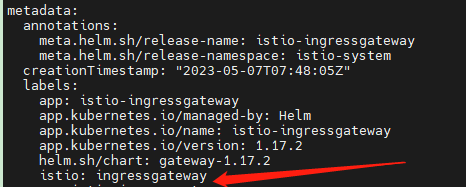
一种是绑定 Pod。
apiVersion: security.istio.io/v1beta1
kind: RequestAuthentication
metadata:
name: frontend
namespace: default
spec:
selector:
matchLabels:
app: frontend
jwtRules:
- issuer: "testing@secure.istio.io"
jwksUri: "https://raw.githubusercontent.com/istio/istio/release-1.5/security/tools/jwt/samples/jwks.json"
考虑到一般不会在 istio-ingressgateway 这个入口网关上操作,所以下面我们使用第二种形式做实验。
提供 jwks.json
首先是这个 YAML 文件中的 jwksUri,里面包含了一个 jwks.json 地址,里面包含了用于验证 token 是否有效的公钥。
在 C# 中,可以这样生成一个 jwks.json。
using System;
using System.IO;
using System.Security.Cryptography;
using Microsoft.IdentityModel.Tokens;
using Newtonsoft.Json;
namespace JWKSGenerator
{
class Program
{
static void Main(string[] args)
{
using var rsa = RSA.Create(2048);
var jwk = new RsaSecurityKey(rsa);
jwk.KeyId = Guid.NewGuid().ToString();
var jsonWebKey = JsonWebKeyConverter.ConvertFromRSASecurityKey(jwk);
var jwkJson = JsonConvert.SerializeObject(jsonWebKey);
var jwksJson = "{\"keys\": [" + jwkJson + "]}";
Console.WriteLine(jwksJson);
}
}
}
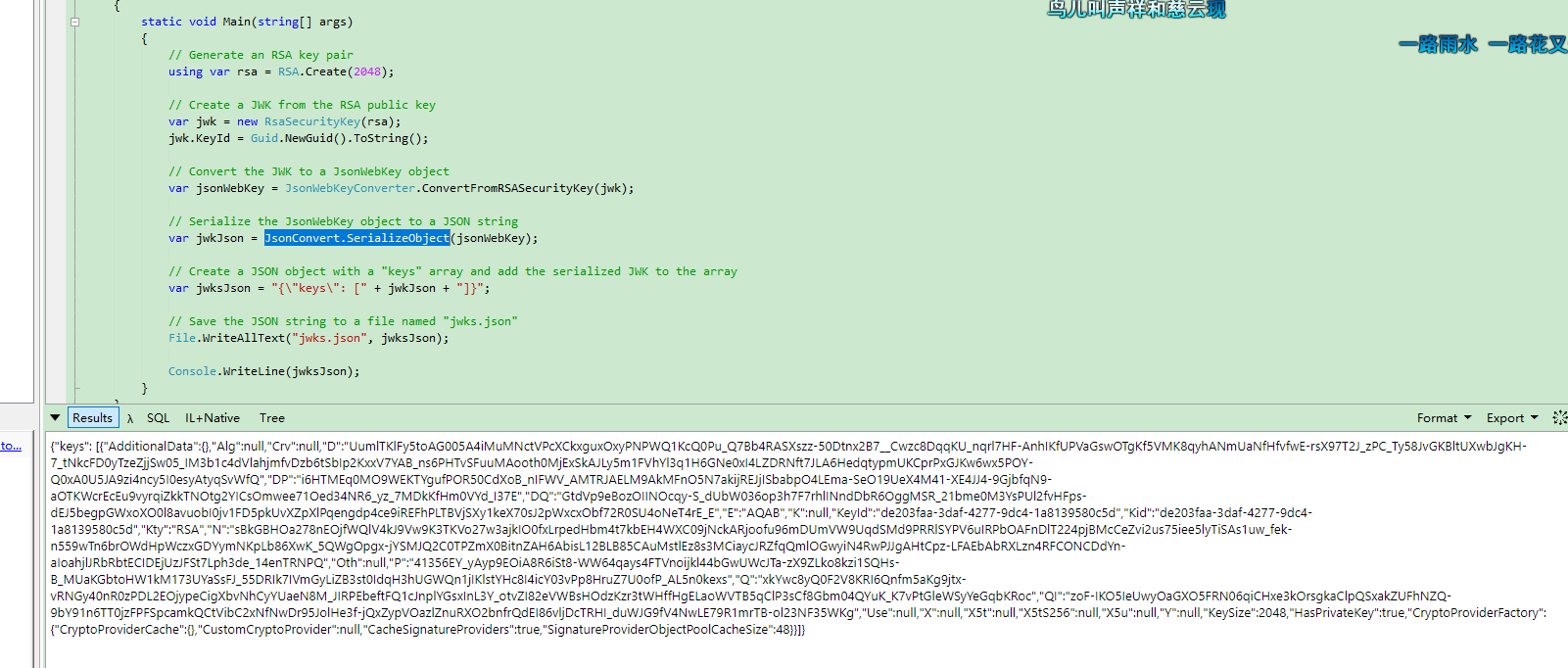
创建 RequestAuthentication
考虑到官网示例中给出的 jwks.json 需要翻墙才能访问,我们可以直接将 jwks.json 放在 YAML 文件中。
apiVersion: security.istio.io/v1beta1
kind: RequestAuthentication
metadata:
name: httpbin-jwt
namespace: bookinfo
spec:
selector:
matchLabels:
app: httpbin
jwtRules:
- issuer: "testing@secure.istio.io"
forwardOriginalToken: true
jwks: |
{
"keys": [
{
"e": "AQAB",
"kid": "DHFbpoIUqrY8t2zpA2qXfCmr5VO5ZEr4RzHU_-envvQ",
"kty": "RSA",
"n": "xAE7eB6qugXyCAG3yhh7pkDkT65pHymX-P7KfIupjf59vsdo91bSP9C8H07pSAGQO1MV_xFj9VswgsCg4R6otmg5PV2He95lZdHtOcU5DXIg_pbhLdKXbi66GlVeK6ABZOUW3WYtnNHD-91gVuoeJT_DwtGGcp4ignkgXfkiEm4sw-4sfb4qdt5oLbyVpmW6x9cfa7vs2WTfURiCrBoUqgBo_-4WTiULmmHSGZHOjzwa8WtrtOQGsAFjIbno85jp6MnGGGZPYZbDAa_b3y5u-YpW7ypZrvD8BgtKVjgtQgZhLAGezMt0ua3DRrWnKqTZ0BJ_EyxOGuHJrLsn00fnMQ"
}
]
}
或者继续使用官方的 jwksUri。
apiVersion: security.istio.io/v1beta1
kind: RequestAuthentication
metadata:
name: httpbin-jwt
namespace: bookinfo
spec:
selector:
matchLabels:
app: httpbin
jwtRules:
- issuer: "testing@secure.istio.io"
forwardOriginalToken: true
jwksUri: "https://raw.githubusercontent.com/istio/istio/release-1.5/security/tools/jwt/samples/jwks.json"
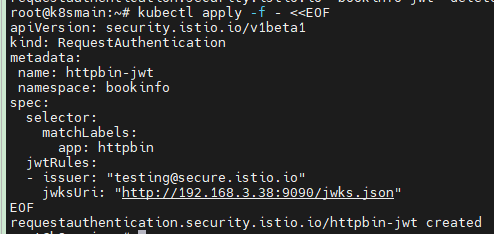
然后部署一个 AuthorizationPolicy,对 /delay/* 地址进行全放通,那么其它地址都需要进行验证才能放行。
apiVersion: security.istio.io/v1
kind: AuthorizationPolicy
metadata:
name: httpbin-policy
namespace: bookinfo
spec:
selector:
matchLabels:
app: httpbin
action: ALLOW
rules:
- to:
- operation:
paths: ["/delay/*"]
After executing the command, you can use the following command to check if everything is normal:
kubectl logs -n istio-system -l app=istiod
Then check the policy rules objects:
kubectl get requestauthentication -n bookinfo
kubectl get authorizationpolicy -n bookinfo

Finally, access /status and /delay through the node port of istio-ingressgateway. You will find that /status returns 403 without a token, while /delay can be accessed normally.
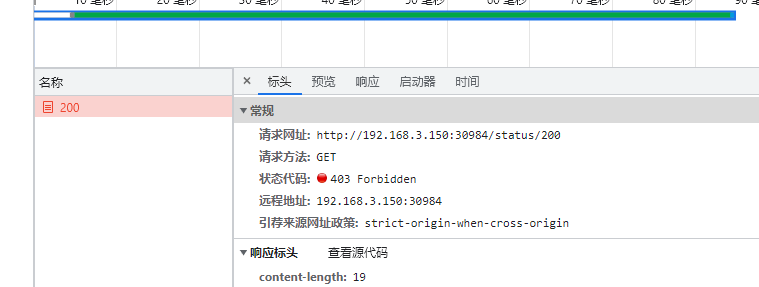
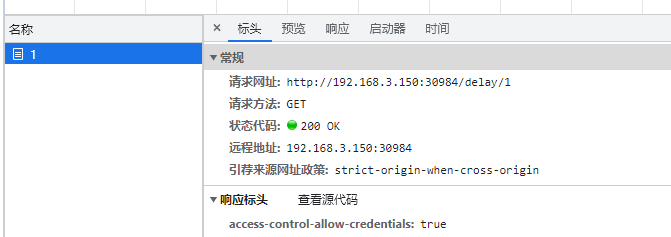
If we need to verify that the token can only be accessed when the issuer in the token is example-issuer, we can use:
apiVersion: security.istio.io/v1
kind: AuthorizationPolicy
metadata:
name: httpbin-policy
namespace: bookinfo
spec:
selector:
matchLabels:
app: httpbin
action: ALLOW
rules:
- to:
- operation:
paths: ["/delay/*"]
when:
- key: request.auth.claims[iss]
values: ["example-issuer"]
The rules of AuthorizationPolicy are numerous and can be used to restrict access policies for different services.
Please refer to the official documentation: https://istio.io/latest/en/docs/concepts/security/#authorization-policies
Therefore, Istio generally verifies whether the JWT is valid or manages the routing access policies. However, if there are dozens or hundreds of routes, configuring Istio can become quite cumbersome. Still, this is not what we want because configuring various application access permissions and verifying tokens in Istio is relatively troublesome, and most business systems need to configure different API access permissions for users individually.


文章评论